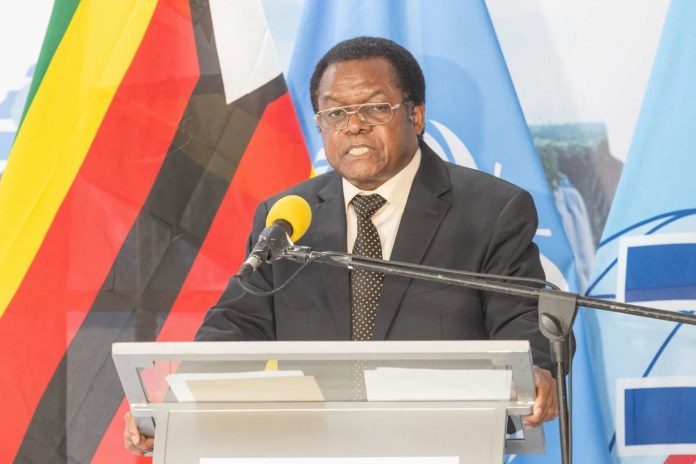Zimbabwe has taken a bold step towards closing the digital divide with the launch of the Africa Broadband Mapping System Project, a transformative initiative that promises to reshape the country’s digital landscape. The project, announced at the inaugural National Broadband Mapping Systems Workshop in Victoria Falls on Thursday, is set to create a detailed, public map of national digital infrastructure while identifying areas of weak or non-existent connectivity.
The initiative is being spearheaded by the International Telecommunication Union (ITU) and funded by the European Union (EU) under the Africa-Europe Digital Regulators Partnership. Zimbabwe is among eleven African countries selected to benefit from this flagship programme, which will run for the next four years. Its key outcome will be the delivery of a publicly accessible visualisation tool—a digital map that will guide infrastructure deployment, attract both public and private investment, and support equitable digital growth across the country.
In her keynote remarks, delivered on her behalf by Deputy Minister Dingumuzi Phuthi, ICT, Postal and Courier Services Minister Dr Tatenda Mavetera underscored the project’s importance to Zimbabwe’s broader development agenda.
Zimbabwe Charts Digital Future With Africa Broadband Mapping Project
“The Government of Zimbabwe welcomes the Africa Broadband Mapping Project with a great deal of hope and anticipation, as it presents a significant opportunity for our nation to bridge the digital divide, foster inclusive growth, and promote socio-economic development through informed policymaking and investment planning,” said Dr Mavetera.
She explained that the project’s primary deliverable—the Visualisation Tool—would play a pivotal role in guiding the Postal and Telecommunications Regulatory Authority of Zimbabwe (POTRAZ) and other stakeholders. By providing accurate data on existing infrastructure, network coverage, gaps, and priority areas, the tool would help shape effective policy responses and ensure that resources are channelled where they are most needed.
“This mapping system is vital to our National Objective of building an inclusive information society where no community, and no one, is left behind,” she added.
The project dovetails neatly with Zimbabwe’s ongoing digital policy reforms, including National Development Strategy 1 (NDS1), the National ICT Policy, and the National Broadband Plan. These frameworks collectively envision an “information society” enabled by universal, affordable, and reliable broadband by the year 2030.
To date, the Government has introduced significant reforms such as the Converged Licensing Framework in 2021, which simplified regulatory requirements for service providers, and the National Artificial Intelligence (AI) Strategy, which relies heavily on robust broadband infrastructure. Officials say the mapping system will act as a crucial enabler of these strategies, ensuring that Zimbabwe’s digital ambitions rest on accurate data and evidence-based planning.
POTRAZ Director General Dr Gift Machengete described the project as a long-overdue intervention in an area that has often lacked clear direction.
“Imagine trying to navigate a vast, unfamiliar landscape without a map. Roads may end abruptly, bridges may be missing, and travellers risk getting lost while opportunities pass by unnoticed,” he said.
“That has been the reality of our digital landscape. Investments have been misdirected, resources wasted, and the promise of progress delayed. Today, we are here to change that narrative for Zimbabwe’s digital future.”
He emphasised that broadband mapping would allow operators to plan infrastructure rollouts more efficiently, reduce duplication of services, and ensure that resources are directed to underserved communities. Beyond efficiency, the project is also expected to promote infrastructure sharing, lower costs for providers, and protect critical facilities from vandalism through better coordination.
For ordinary Zimbabweans, the project’s impact could be far-reaching. Improved broadband access means more reliable connectivity for schools, health facilities, businesses, and homes. Enhanced digital access is also expected to stimulate entrepreneurship, enable digital government services, and improve participation in the global digital economy.
“Broadband is not just about faster internet—it is about empowering our communities with opportunities,” said Dr Machengete. “This mapping system ensures that no community is overlooked, whether urban or rural, as we pursue our goal of universal digital inclusion.”
The Victoria Falls workshop, which drew government officials, international partners, and key telecom stakeholders, was hailed as a landmark event in Zimbabwe’s digital transformation journey. It marked the beginning of a collaborative process where government, regulators, service providers, and development partners will work hand-in-hand to ensure that broadband access becomes a universal right rather than a privilege.
As Zimbabwe positions itself within the broader African digital ecosystem, the Africa Broadband Mapping Project provides not only a tool for planning but also a symbol of the country’s determination to achieve Vision 2030. By leveraging international partnerships, embracing data-driven decision-making, and prioritising inclusion, Zimbabwe is laying the groundwork for a future in which connectivity drives social progress and economic growth.
For policymakers and citizens alike, the message from Victoria Falls was clear: broadband is the backbone of tomorrow’s economy, and mapping it today is the first step toward an inclusive, connected future.
Source- Herald

